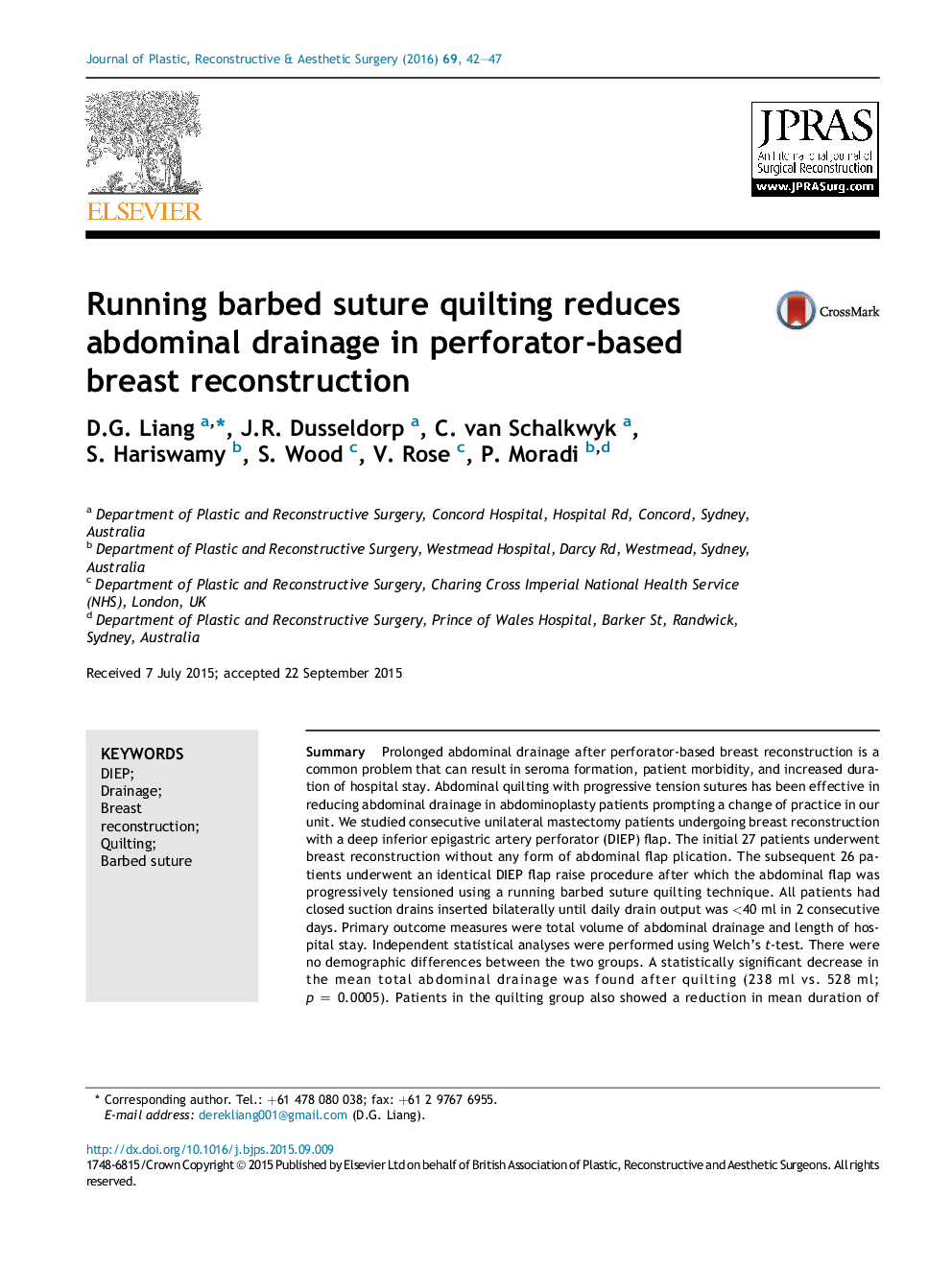| Article ID | Journal | Published Year | Pages | File Type |
|---|---|---|---|---|
| 4116974 | Journal of Plastic, Reconstructive & Aesthetic Surgery | 2016 | 6 Pages |
SummaryProlonged abdominal drainage after perforator-based breast reconstruction is a common problem that can result in seroma formation, patient morbidity, and increased duration of hospital stay. Abdominal quilting with progressive tension sutures has been effective in reducing abdominal drainage in abdominoplasty patients prompting a change of practice in our unit. We studied consecutive unilateral mastectomy patients undergoing breast reconstruction with a deep inferior epigastric artery perforator (DIEP) flap. The initial 27 patients underwent breast reconstruction without any form of abdominal flap plication. The subsequent 26 patients underwent an identical DIEP flap raise procedure after which the abdominal flap was progressively tensioned using a running barbed suture quilting technique. All patients had closed suction drains inserted bilaterally until daily drain output was <40 ml in 2 consecutive days. Primary outcome measures were total volume of abdominal drainage and length of hospital stay. Independent statistical analyses were performed using Welch's t-test. There were no demographic differences between the two groups. A statistically significant decrease in the mean total abdominal drainage was found after quilting (238 ml vs. 528 ml; p = 0.0005). Patients in the quilting group also showed a reduction in mean duration of hospital stay. Quilting of the abdominal flap helps to reduce abdominal drainage not only in abdominoplasty patients but also in patients undergoing breast reconstruction with DIEP flap.
